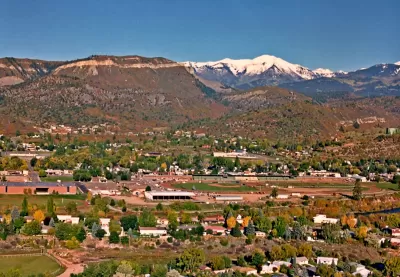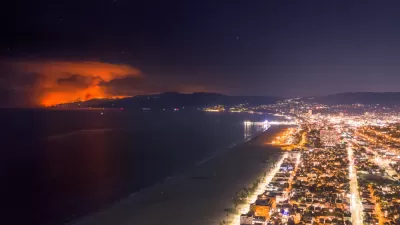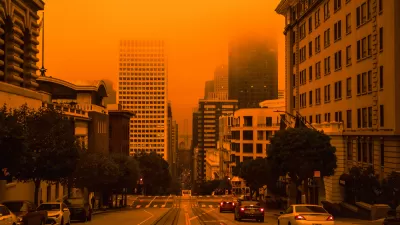Experts warn that more intense fires fueled by a warming climate are threatening an increasing number of Colorado's suburban communities.

The destructive firestorm that raged through Colorado last month, along with other major fires in the last few years, highlighted the need for added fire protection, known as "hardening," in all of Colorado's suburbs, say fire scientists and officials.
According to an article by Bruce Finley, researchers point to both climate change and the encroachment of flammable homes in fire-prone areas as factors driving more devastating fires and longer fire seasons. Rising temperatures and dry grass that would normally be buried under snow have been fueling fast-moving fires, forcing thousands of residents to evacuate and destroying more than 1,000 homes last year. Meanwhile, record high winds complicate firefighting efforts, sometimes grounding aircraft and rendering traditional tactics ineffective.
Officials and researchers are scrambling to understand how to prepare for the future and facilitate safe and speedy evacuations. With fires threatening "much wider areas than previously understood," land use will play an increasingly important role in protecting communities that were previously presumed safe.
The Colorado Fire Commission, made up of public safety officials, firefighters, law enforcement, and others, are working on a set of recommendations that could include changes in building codes to mandate non-flammable materials, zoning changes to limit construction in fire zones, and prescribed fires.
FULL STORY: Marshall firestorm shows Colorado suburbs now vulnerable as climate warms, “hardening” needed, experts say

Study: Maui’s Plan to Convert Vacation Rentals to Long-Term Housing Could Cause Nearly $1 Billion Economic Loss
The plan would reduce visitor accommodation by 25,% resulting in 1,900 jobs lost.

North Texas Transit Leaders Tout Benefits of TOD for Growing Region
At a summit focused on transit-oriented development, policymakers discussed how North Texas’ expanded light rail system can serve as a tool for economic growth.

Using Old Oil and Gas Wells for Green Energy Storage
Penn State researchers have found that repurposing abandoned oil and gas wells for geothermal-assisted compressed-air energy storage can boost efficiency, reduce environmental risks, and support clean energy and job transitions.

Private Donations Propel Early Restoration of Palisades Playground
Los Angeles has secured over $1.3 million in private funding to restore the Pacific Palisades playground months ahead of schedule, creating a modern, accessible space that supports community healing after recent wildfires.

From Blight to Benefit: Early Results From California’s Equitable Cleanup Program
The Equitable Community Revitalization Grant (ECRG) program is reshaping brownfield redevelopment by prioritizing projects in low-income and environmental justice communities, emphasizing equity, transparency, and community benefits.

Planting Relief: Tackling Las Vegas Heat One Tree at a Time
Nevada Plants, a Las Vegas-based nonprofit, is combating the city’s extreme urban heat by giving away trees to residents in underserved neighborhoods, promoting shade, sustainability, and community health.
Urban Design for Planners 1: Software Tools
This six-course series explores essential urban design concepts using open source software and equips planners with the tools they need to participate fully in the urban design process.
Planning for Universal Design
Learn the tools for implementing Universal Design in planning regulations.
Ascent Environmental
Borough of Carlisle
Institute for Housing and Urban Development Studies (IHS)
City of Grandview
Harvard GSD Executive Education
Toledo-Lucas County Plan Commissions
Salt Lake City
NYU Wagner Graduate School of Public Service




























